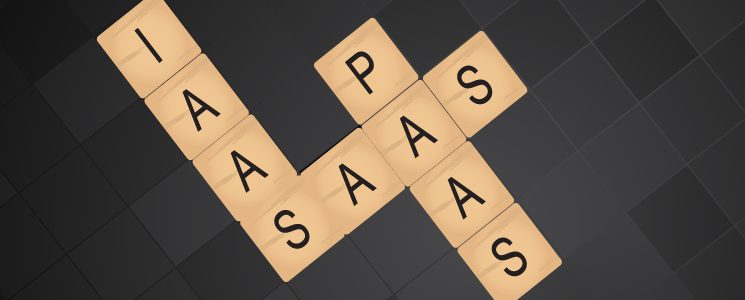Alphabet Soup
Studying the New Deal is often an exercise in processing acronyms. More than one university professor has accurately described all the programs created during that period as alphabet soup. Heck, even the president who oversaw the New Deal is referred to by his initials–FDR. Naturally, between the FDIC, WPA, TVA, PWA, AAA, RA, REA, NYA, and CCC, historians lament the fact that acronyms aren’t allowed in Scrabble. At least when your tiles include five vowels and two consonants you’d have some option.
The alphabet soup affliction similarly applies to the world of technology. It seems that everyday a new abbreviation works its way into the lexicon of the digital world. Over the past couple of years there has been a steady growth in different “as a service” offerings. These are basically different types of cloud computing options, the most common of which is Software as a Service, or, more briefly–SaaS.
Most end-users think of “the cloud” as the place where they store their pictures and back up their important files. For businesses though the cloud is how they get things done. This is the place where systems run, applications are built and executed, and all those tasks that end-users just “do” are designed to do just that.
One Pyramid, Hold the Hieroglyphics
There is more to the “aaS” family that SaaS, however. In general terms there are three different components of the cloud computing stack.
Imagine, if you will, a pyramid. We’ll call this the Cloud Computing Stack Pyramid, or the CCSP. Just kidding. We don’t need another abbreviation to deal with. Getting back to the pyramid idea, imagine that there are three different sections where the base of the pyramid is infrastructure (IaaS), the middle represents platform (PaaS), and the top is software (SaaS).
Now let’s work backwards from the top-down to unpack what each of these components are and how they differ.
SaaS
In a cloud computing environment, SaaS is likely what people are most familiar with. SaaS refers to web applications that reside in the cloud. These can be licensed software like Microsoft’s Office 365, Adobe Creative Cloud, or ArcGIS Online. Not every SaaS option is subscription based, however, and applications like Dropbox and PayPal fall under the broad heading of SaaS, too.
These types of applications allow users to complete tasks over the web without the need to install anything on their local hardware. Because the primary functionality of the software is server-based, SaaS applications lend themselves to sharing and collaboration much more easily than traditional, installed applications. In other words, users access the application through their web browser and not by clicking a desktop icon.
PaaS
A cloud based platform differs from a service in myriad ways. Whereas a service is a finished product intended for end users, a platform is designed for software developers. This means that all of the tools necessary to build, test, and deploy web-based applications are hosted in the cloud. As stated elsewhere in these pages, a platform is like having a Lego baseplate and a slew of Lego bricks.
In other words, a SaaS is something that is ready to use, while a PaaS provides the environment to build a SaaS. This is especially helpful for projects or companies that have multiple developers collaborating on a project because it enables all parties to work with the same tools and resources. There is no need to manually share various elements of a project because everything is housed in a single, central location that is easily accessible by everyone.
IaaS
There used to be a much more distinct line between PaaS and IaaS, but that line has blurred in recent years as more PaaS providers begin to manage their own infrastructure. Nevertheless, IaaS is when the actual hardware used to operate a PaaS, the servers, switches, and other physical media necessary exist in a cloud environment. Some of the most notable vendors in this category are already household names because the likes of Google, Amazon Web Services, Rackspace, and VMWare offer IaaS.
The benefit of IaaS is that companies can significantly reduce the cost of operating web services. Many IaaS providers have subscription plans or allow users to pay for the resources they use. Because these items are maintained by a different company the costs associated with maintenance and upgrades are the responsibility of the vendor.
As more PaaS providers include infrastructure as part of their service, vendors exercise greater control over their cloud environment, which allows them to offer more competitive rates, and ensure better responsiveness and scaling for applications built on the platform.
It’s worth pointing out that cloud computing technology is constantly evolving so these “aaS” conceptions are fairly broad, and what’s included under each heading may change. For example, Plum Voice is a good example of the convergence of PaaS and IaaS. We operate three, geographically dispersed data centers in the United States and a fourth in the United Kingdom. Having access to, and control over this much infrastructure enabled Plum to build a secure system that is PCI-DSS, HIPAA, and SOC2 compliant.
The range of tools offered through Plum’s communications platforms, therefore making it a CPaaS, is diverse and includes everything necessary to create powerful IVR, messaging, self-service, CEBP, and other applications. In other words, it’s possible to use Plum’s IaaS and PaaS to build a really powerful SaaS. Phew!

